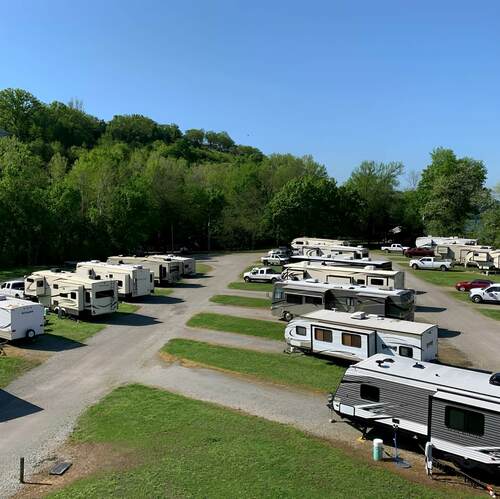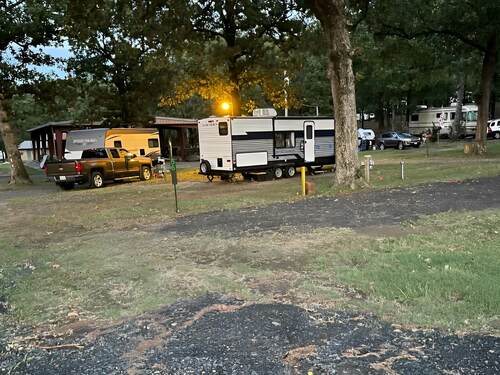Denton Ferry RV Park & Cabin Rental
44 RV Sites
Welcome to Denton Ferry RV Park, nestled in the Ozark Mountains near the beautiful White River in Cotter, Arkansas. As one of Arkansas' favorite Good Sam RV Parks, we invite you to experience the warm, friendly atmosphere that makes us Ozark's BEST RV Destination!
Our park features 44 level back-in and pull-thru RV sites, all equipped with full-service hook-ups including 50/30 amp electricity, water, and sewer. The park’s entrance is wide and paved, leading you to our picturesque riverside meadow. Here, you can choose from 17 riverfront sites or one of our 27 convenient pull-through sites. Each site is spacious, measuring 16' x 65', with an additional 14' x 65' grassy lawn space for relaxation.
For nature lovers, the park offers two natural spring-fed ponds and a meadow, forming a beautiful riverside walking area. From here you can also enjoy a beautiful 3 mile walking/biking trail to the town of Cotter. 12 of our sites come with a built in firepit. Our Reception Center houses not only our park office but also ""The Cleanest RV Park Restrooms in America,"" featuring private restrooms and showers, a Guest's Lounge, complete with YouTubeTV, games, dining area, and a library, and a clean laundromat.
Don't miss out on our popular Vacation Cabin on the White River. It’s a beautiful retreat with clean, updated furnishings, two bedrooms, and three bathrooms, comfortably accommodating up to eight people. But be quick – it’s a favorite and gets booked fast!
At Denton Ferry RV Park, we’re committed to providing a clean, friendly, and serene camping experience on the White River. Join us and see why our guests love it here!
from $45/night







